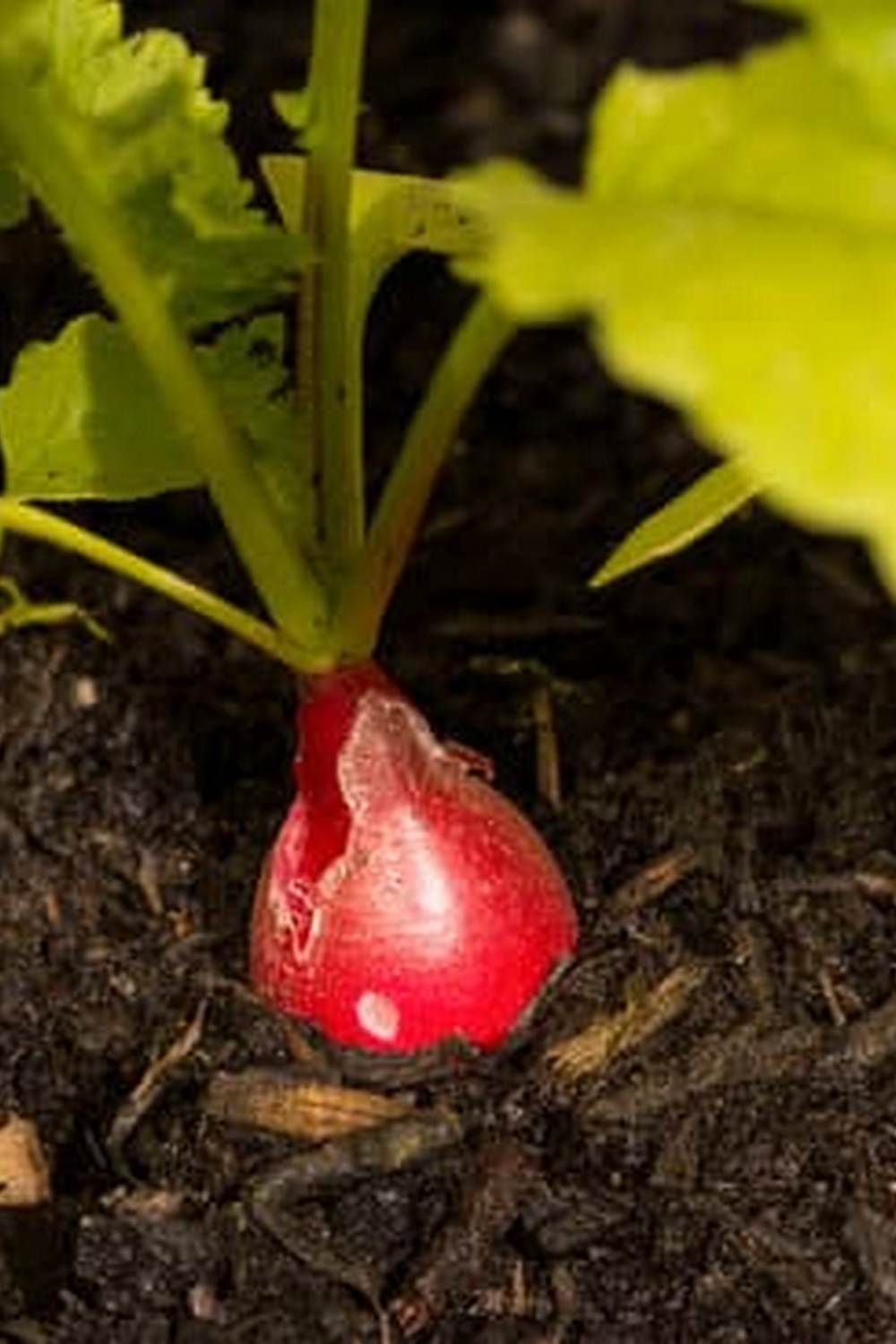Are you interested in starting your own vegetable garden at home in India? Vegetable gardening is a rewarding and sustainable way to have a fresh supply of produce right at your doorstep. Whether you have a spacious backyard or limited space in urban India, there are various techniques and tips that can help you grow a bountiful harvest of vegetables.
In this article, we will explore the world of vegetable gardening at home in India, covering everything from choosing the right vegetables for the Indian climate and soil to organic pest control and harvesting techniques. Whether you’re new to gardening or have years of experience, there’s always something new to learn when it comes to cultivating your own vegetables.
We will also delve into the success stories of individuals who have found joy and fulfillment in growing their own vegetables, as well as provide valuable resources for those looking to embark on their own vegetable gardening journey. So, roll up your sleeves and get ready to dig into the wonderful world of vegetable gardening at home in India.
Choosing the Right Vegetables for Indian Climate and Soil
When it comes to vegetable gardening at home in India, choosing the right vegetables for the local climate and soil is crucial for a successful harvest. In a country as diverse as India, with varying climates and soil types, it’s important to select vegetables that can thrive in these conditions. One of the key factors to consider is the annual rainfall and temperature range in your specific region of India.
In northern parts of India, where winters can be harsh, cold-weather vegetables such as cauliflower, carrots, and radishes are good choices. In contrast, southern regions with warmer temperatures year-round may be better suited for heat-loving vegetables like okra, eggplant, and tomatoes. Additionally, considering the soil type is essential. For example coarse sandy soil may be great for root vegetables such as potatoes and carrots.
Another important consideration when choosing vegetables for your home garden in India is understanding which varieties are resistant to common local pests and diseases. This can save you a lot of time and effort on pest management in the long run. By selecting locally adapted vegetable varieties, you can increase your chances of enjoying a bountiful harvest without relying heavily on chemical pesticides.
Furthermore, incorporating a variety of traditional Indian vegetables into your garden can also be rewarding both culturally and culinary wise. Vegetables such as bitter gourd (karela), bottle gourd (lauki), and fenugreek leaves (methi) are not only well-suited for the Indian climate but also hold significant value in Indian cuisine and traditional medicine practices.
Preparing the Soil for Vegetable Gardening
Before starting a vegetable garden at home in India, it is essential to prepare the soil properly to ensure the healthy growth of your plants. The quality of soil directly impacts the yield and health of the vegetables you grow. Here are some steps to prepare the soil for vegetable gardening:
1. Test the Soil: Conduct a soil test to determine its pH level and nutrient content. This will help you understand what amendments or fertilizers are needed to improve the soil quality.
2. Add Organic Matter: Incorporate organic matter such as compost, well-rotted manure, or leaf mold into the soil to improve its structure and fertility. Organic matter helps retain moisture, improves drainage, and provides essential nutrients to the plants.
3. Remove Weeds: Clear the area of any weeds or unwanted vegetation before planting. Weeds will compete with your vegetable plants for water, sunlight, and nutrients.
4. Till the Soil: Use a tiller or a garden fork to loosen and aerate the soil. This will promote root growth and allow better penetration of water and nutrients.
By following these steps, you can create a nutrient-rich environment for your vegetable garden to thrive in, leading to a bountiful harvest of fresh produce right at home in India.
Remember that preparing the soil is crucial for successful vegetable gardening at home in India; it sets the foundation for healthy plant growth and high-quality vegetables that your family can enjoy.
Container Gardening for Limited Space in Urban India
For many people living in urban areas of India, space is a major constraint when it comes to vegetable gardening at home. However, the good news is that with container gardening, even those with limited space can enjoy the benefits of growing their own vegetables. Here are some tips and techniques for successful container gardening in urban India:
- Choose the Right Containers: When it comes to container gardening in urban India, it’s important to choose the right containers. Opt for lightweight and durable containers such as plastic or resin pots that are easy to move around. Make sure the containers have drainage holes to prevent waterlogging.
- Select Suitable Vegetables: Not all vegetables are suitable for container gardening. In urban India, where space is limited, choose compact varieties of vegetables such as cherry tomatoes, lettuce, spinach, radishes, and peppers that can thrive in containers.
- Provide Proper Care: Container gardens require regular maintenance such as watering and fertilizing. Be sure to water your plants regularly, especially during hot weather. Use a high-quality potting mix and organic fertilizers to provide essential nutrients to your vegetable plants.
With these simple tips, even those living in urban areas of India can enjoy the rewards of vegetable gardening at home. Whether it’s a balcony, terrace, or rooftop garden, container gardening makes it possible for everyone to grow their own fresh and healthy produce.
Tips for Organic Pest Control in Indian Vegetable Gardens
Organic pest control is essential for maintaining a healthy and thriving vegetable garden at home in India. Pesticides can be harmful to both the environment and human health, so it is important to explore natural methods of pest control. There are several effective techniques that can help keep pests at bay without the use of harmful chemicals.
One popular method of organic pest control is companion planting. This involves planting certain vegetables, herbs, or flowers alongside each other to naturally repel pests or attract beneficial insects. For example, planting marigolds around your tomato plants can help deter nematodes and other harmful insects. Additionally, attracting ladybugs, lacewings, and other predatory insects to your garden can help keep pest populations in check.
Another important aspect of organic pest control is maintaining a healthy garden ecosystem. This includes proper soil management, regular watering, and providing adequate nutrients for your plants. A well-balanced ecosystem will help promote strong plant growth and naturally deter pests.
Moreover, creating physical barriers such as row covers or netting can also protect your vegetable plants from unwanted pests. These barriers can prevent insects from laying eggs on your plants or shield them from birds and other animals that may cause damage.
By implementing these organic pest control techniques, you can ensure a bountiful harvest of homegrown vegetables while promoting a sustainable and environmentally friendly approach to vegetable gardening at home in India.
| Tips for Organic Pest Control | Details |
|---|---|
| Companion Planting | Planting compatible species to naturally repel pests or attract beneficial insects |
| Maintaining Ecosystem | Proper soil management, watering, and nutrient supply to promote healthy plant growth |
| Physical Barriers | Using row covers or netting to protect plants from pests and animals |
Watering and Irrigation Techniques for Home Vegetable Gardens in India
When it comes to successful vegetable gardening at home in India, proper watering and irrigation techniques are essential. The Indian climate can be quite diverse, with some regions experiencing high temperatures and others receiving heavy rainfall. It is crucial for home gardeners to understand the specific needs of their vegetable plants and provide them with the right amount of water.
One important factor to consider when watering your home vegetable garden in India is the type of soil you have. Sandy soils drain quickly and may require more frequent watering, while clay soils retain moisture for longer periods. Understanding your soil type will help you determine the best watering schedule for your plants.
In addition to traditional methods of hand-watering or using a hose, consider implementing irrigation techniques such as drip irrigation or soaker hoses. These methods can help conserve water by delivering it directly to the plant roots, reducing evaporation and water waste. This is especially important in areas where water conservation is a concern. Furthermore, using mulch around your vegetable plants can help retain moisture in the soil, reducing the need for excessive watering.
Overall, by paying attention to the specific watering needs of different vegetables, understanding your soil type, and implementing efficient irrigation techniques, you can ensure healthy growth and productivity in your home vegetable garden in India. By managing water wisely, home gardeners can contribute to sustainable and bountiful harvests while conserving this precious resource.
Harvesting and Storing Homegrown Vegetables
Harvesting Techniques
When it comes to vegetable gardening at home in India, knowing the correct time to harvest your homegrown vegetables is crucial. Each vegetable has its own optimal harvesting time, and it’s important to pick them at the right stage of ripeness for the best flavor and nutritional content.
For instance, tomatoes should be picked when they are firm and fully colored, while leafy greens like spinach and lettuce should be harvested when they are young and tender. Additionally, using sharp garden scissors or shears to carefully cut the vegetables from the plant can help prevent damage and ensure a longer shelf life.
Storing Homegrown Vegetables
Proper storage is essential to maintain the freshness and quality of your homegrown vegetables in India. Root vegetables like potatoes, carrots, and onions should be stored in a cool, dark place with good ventilation to prevent sprouting or rotting.
Leafy greens can be stored in the refrigerator, preferably in airtight bags with a paper towel to absorb excess moisture. Furthermore, it’s important to regularly check on stored vegetables for any signs of spoilage and remove any that show decay to prevent it from spreading to others.
Preserving Excess Harvest
Inevitably, there will be times when you have an abundance of homegrown vegetables that you cannot consume immediately. In such cases, consider preserving your excess harvest through methods like pickling, canning, or freezing.
These techniques not only extend the shelf life of your produce but also allow you to enjoy your homegrown vegetables during seasons when they are not readily available. By learning how to properly preserve your excess harvest, you can continue to enjoy the fruits of your labor throughout the year.
Success Stories of Vegetable Gardening at Home in India
Urban Residents Embrace Balcony Gardens
In recent years, many urban residents in India have successfully taken up vegetable gardening on their balconies. With limited space and a desire to grow their own food, these individuals have transformed their balconies into thriving gardens. By utilizing creative solutions such as vertical gardening and hanging planters, they have been able to grow a variety of vegetables such as tomatoes, peppers, and herbs right at home.
Community Gardens Flourish in Suburban Areas
In suburban areas of India, community gardens have become a hub for social interaction and sustainable living. Families and neighbors come together to cultivate the land, share resources, and exchange knowledge about vegetable gardening. These communal spaces have not only provided fresh produce for the participants but also fostered a sense of community and cooperation among the residents.
Rural Farmers Implement Organic Farming Techniques
In rural parts of India, small-scale farmers have adopted organic farming techniques for their home vegetable gardens. By using natural fertilizers, crop rotation methods, and traditional farming practices, these farmers have achieved impressive yields of various vegetables without relying on chemical pesticides or fertilizers. Their success has demonstrated the viability of sustainable agriculture methods in producing healthy and nutritious vegetables for household consumption.
These success stories showcase the growing popularity and potential of vegetable gardening at home in India across different regions and demographics. From urban balconies to rural farmlands, individuals are finding innovative ways to grow their own vegetables and contribute to a healthier and more sustainable food system.
Resources for Vegetable Gardening at Home in India
In conclusion, vegetable gardening at home in India offers numerous benefits, including access to fresh and organic produce, a sense of satisfaction from growing one’s own food, and the opportunity to contribute to sustainability.
By following the guidelines for choosing the right vegetables for the Indian climate and soil, preparing the soil properly, utilizing container gardening in urban areas, implementing organic pest control methods, and employing efficient watering and irrigation techniques, individuals can successfully cultivate their own vegetable gardens at home.
Furthermore, the success stories of individuals who have embraced vegetable gardening at home in India serve as inspiration for others. These stories demonstrate that with dedication and knowledge, anyone can enjoy a bountiful harvest of homegrown vegetables.
Additionally, there are several resources available for those interested in pursuing vegetable gardening at home in India. From online forums and communities to local agricultural extension offices, individuals can access valuable information, guidance, and support to help them establish and maintain thriving home vegetable gardens.
With the increasing awareness of sustainability and healthy living, vegetable gardening at home in India is gaining popularity as a practical and rewarding activity. It not only promotes self-sufficiency but also provides an opportunity for individuals to reconnect with nature and adopt a more sustainable lifestyle.
As more people embrace this practice, it is expected that communities will become more food secure while also reducing their environmental impact. Therefore, vegetable gardening at home in India is not just a hobby – it is a step towards a healthier and more sustainable future.

If you’re looking to get into vegetable gardening, or are just looking for some tips on how to make your current garden better, then you’ve come to the right place! My name is Ethel and I have been gardening for years. In this blog, I’m going to share with you some of my best tips on how to create a successful vegetable garden.





